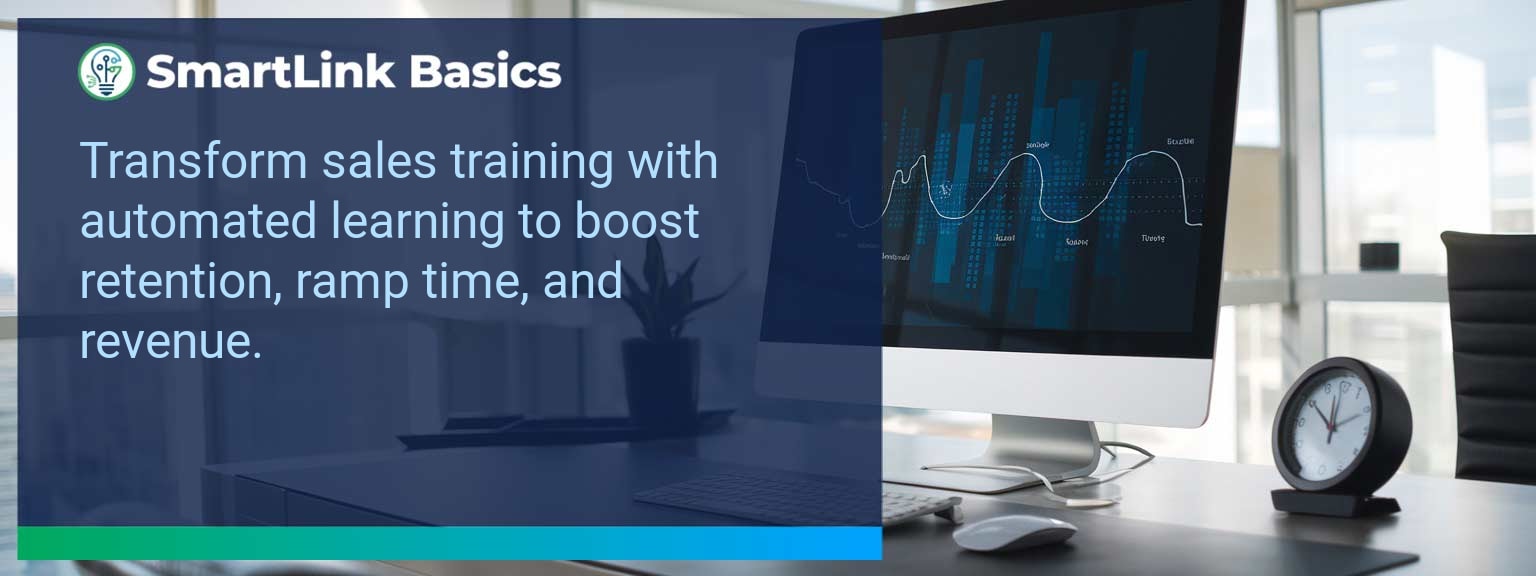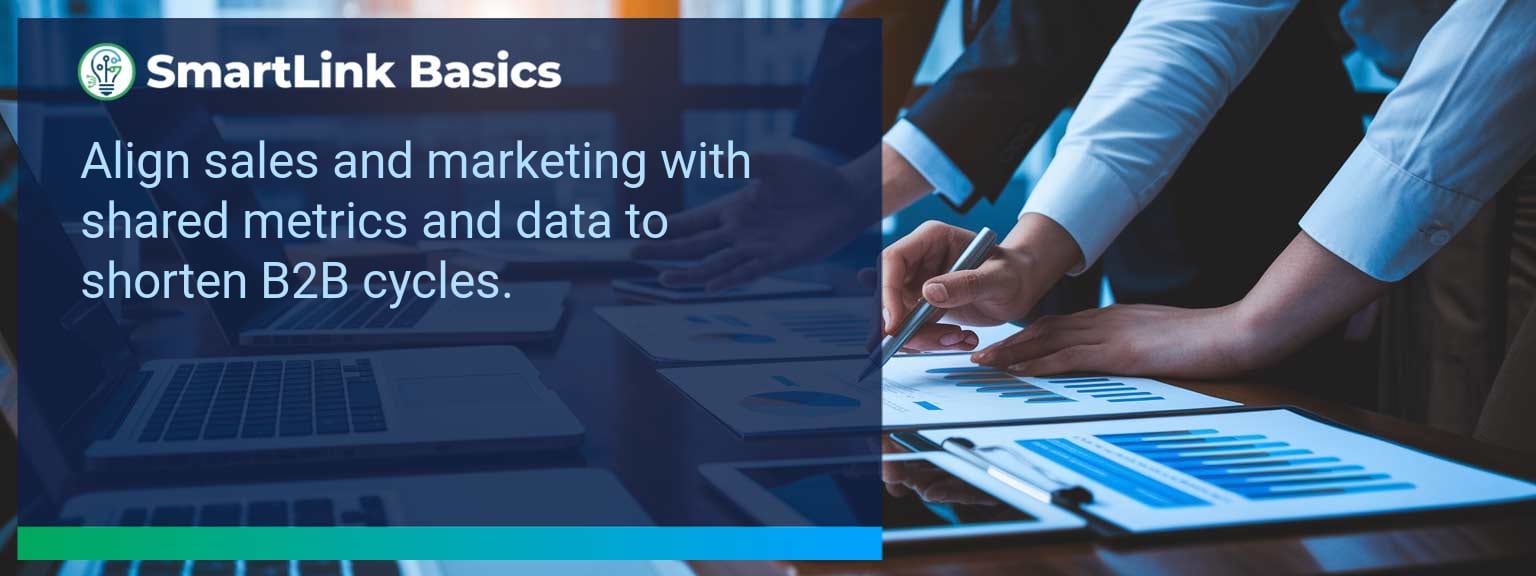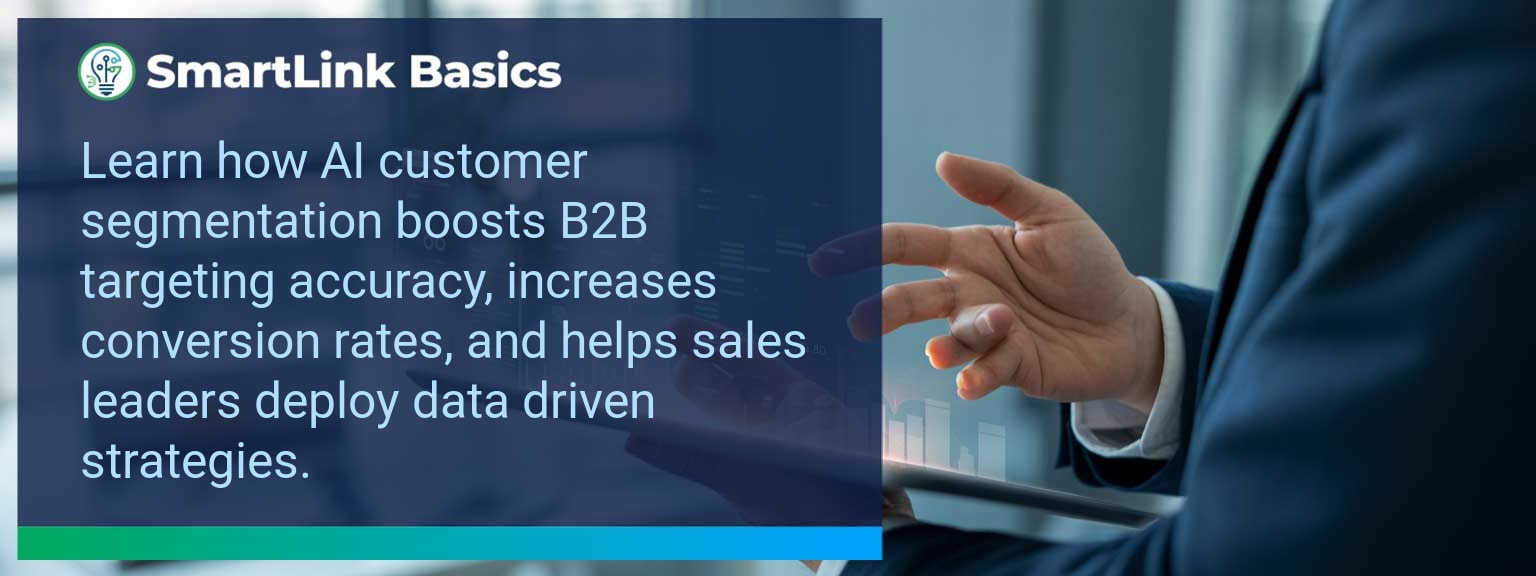Industry data shows that organizations adopting AI-driven automation achieve cost reductions of up to 30% while accelerating sales cycles by 20% or more (McKinsey, 2024). For sales leaders, AI automated workflows now define competitive advantage, enabling teams to reallocate time from repetitive tasks to high-value engagements. At SmartLink Basics, we help decision-makers implement these systems strategically, ensuring they integrate with existing revenue operations. In this article, you’ll see how AI automated workflows power business outcomes, the common obstacles that slow adoption, and practical steps to optimize processes. You’ll walk away with proven examples, a 90-day action blueprint, and measurable KPIs to track results.
- Automate repetitive administrative and CRM updates with AI.
- Integrate machine learning to personalize outreach at scale.
- Streamline approvals, quotes, and contract workflows for speed.
- Use predictive analytics to prioritize sales opportunities.
- Track adoption and performance with targeted metrics.
AI Automated Workflows: What Changed and Why It Matters
AI adoption has shifted from experimental to operational, making automated workflows a standard in high-performing sales organizations. The real advantage lies in combining workflow automation with artificial intelligence workflows to optimize every step of the revenue process. Sales leaders now use AI to synchronize touchpoints, reduce manual inputs, and ensure faster execution. For example, a B2B SaaS leader introduced automated lead enrichment and routing, cutting qualification time by 60%. Actionable insight: Audit processes for time-intensive handoffs and apply AI where repeatability is high.Redesign the Revenue Operating System With AI Automated Workflows
ICP, Segmentation, and Targeting AI-enabled segmentation uses historical wins, firmographic, and behavioral data to dynamically update ICP profiles. This ensures targeting precision without quarterly re-work. Pipeline Architecture Automated workflows push opportunities through the right stages based on engagement signals. AI flags at-risk deals for intervention. Plays and Messaging Integrated automation tools deliver personalized sequences based on buyer activity, increasing relevance at every touchpoint. Operating Cadence AI schedules follow-ups, forecast calls, and account reviews based on actual pipeline movement rather than static calendars. Actionable insight: Implement automation that adapts in real-time to both internal and buyer-driven events.Common Obstacles To Achieving Seamless Automation
The most frequent challenges are fragmented systems, inconsistent data quality, and cultural resistance. Without a unified data layer, automation amplifies errors rather than solving them. Coca-Cola Europacific Partners reported needing a full data governance upgrade before AI could improve sales workflows. Leaders must first assess infrastructure readiness and train teams to trust AI-influenced recommendations. Actionable insight: Before deployment, establish clean data practices and a single source of truth.Implementing AI To Optimize Workflows
Effective deployment of AI process optimization starts with mapping current-state processes, identifying friction points, and matching them with automation tools. For example, automating proposal generation based on CRM opportunity data can reduce turnaround from three days to one hour. Solutions combining business process automation platforms with machine learning integration enable continuous performance improvement. Actionable insight: Pilot in one high-impact stage, measure, and then expand.Tangible Benefits From Automated Processes
The benefits extend beyond time savings — sales leaders gain a scalable system. Tangible outcomes include faster quote-to-close, higher lead conversion, and better forecast accuracy. A manufacturing firm implemented AI-assisted order processing and cut errors by 40%, improving on-time delivery rates. Actionable insight: Track both speed and accuracy to measure workflow automation effectiveness.Metrics That Matter
| Category | Metric | Definition | Target |
|---|---|---|---|
| Leading | Workflow Completion Rate | % of automated sequences executed without manual intervention | 95%+ |
| Leading | AI Suggestion Adoption Rate | % of AI-generated action recommendations executed by reps | 80%+ |
| Lagging | Cycle Time Reduction | Decrease in time from lead entry to closed-won | 20%+ |
| Lagging | Revenue Per Rep | Average sales revenue generated per sales rep per quarter | +15% YoY |
| Quality | Automation Error Rate | % of workflows that trigger incorrect outcomes | <1% |
| Quality | Customer Satisfaction Post-Automation | Average CSAT score after automation implementation | ≥ 4.5/5 |
Innovations And Next Steps For AI Automation
Emerging capabilities like AI-generated playbooks, intent-driven dynamic routing, and integrated AR for virtual product demos are shaping the next wave of sales automation. Companies integrating these tools early will outpace competitors in speed and personalization. Actionable insight: Stay ahead by testing emerging automation features quarterly and aligning them with evolving buyer expectations.Get the 90-day plan, coaching rubric, and dashboard template to operationalize AI in your enablement program.
Turning AI Automation Into a Revenue Multiplier
AI automated workflows are now a strategic lever for predictable, scalable growth. This guide outlined current applications, adoption challenges, a 90-day execution plan, and measurable success criteria. To make automation pay off, sales leaders should integrate tools into one cohesive operating system and review results monthly for continuous improvement. Access more AI-driven sales enablement resources from SmartLink Basics to design a high-performance automation strategy. Top-performing sales teams are rarely the result of chance. They are built through disciplined execution and intentional leadership. At SmartLink Basics, we see consistent evidence that sales leaders who adopt structured, measurable, and repeatable strategies can lift both short-term results and long-term revenue stability. Today’s competitive markets demand a leadership approach that balances immediate quota attainment with sustainable growth. This article breaks down practical Sales Leadership Strategies that enable decision-makers to surpass performance plateaus. You will learn how to identify and eliminate barriers to growth, apply proven management techniques, and install systems to drive persistent sales performance improvement.- Define and enforce clear Ideal Customer Profiles (ICPs).
- Redesign pipeline architecture for clarity and speed.
- Deploy consistent plays and messaging across the team.
- Install a disciplined operating cadence for accountability.
- Invest in leadership development to sustain momentum.
Overcoming Barriers To Sales Growth
Revenue stalls often trace back to either misaligned targeting, inconsistent execution, or ineffective leadership in sales. Even skilled account executives struggle if they lack the clarity of a well-structured sales framework, and leaders that fail to track the right metrics lose the ability to course-correct in time. Identifying these bottlenecks early is vital. For example, a well-known B2B SaaS company found that 40% of their pipeline was outside their ICP, diluting win rates and resource allocation. By aligning resources where they were most effective, revenue per rep rose by 18% in two quarters. Leaders must know exactly which friction points exist and replace them with proven routines that stimulate sales team motivation.Implementing Proven Sales Leadership Strategies
Strong sales leadership strategies thrive on structure, clarity, and accountability. A revenue system built on guesswork typically collapses under pressure. Instead, focus on three essentials—precise market targeting, unified sales management techniques, and disciplined time-to-close reduction. For instance, deploying a standardized playbook ensures that whether you have veterans or new reps, the messaging is consistent and confidence is high. Strategic sales planning also demands clear ownership of activities—every pipeline stage should have a responsible owner and defined exit criteria. Sales coaching methods should be embedded within this framework, reinforcing high-performance behavior daily.Measurable Improvements In Performance And Revenue
Measurement is the only reliable indicator that a strategy is working. Leading sales organizations don’t wait for quarterly results; they track leading indicators weekly. By focusing on early signals like prospect-to-demo conversion or deal velocity, teams can make timely adjustments. A mid-market logistics provider applied this principle, adjusting activity levels based on conversion ratios, and achieved a 12% increase in quarterly close rates. Effective leadership in sales means transforming metrics from static reports into active decision-making tools.| Category | Metric | Definition | Target |
|---|---|---|---|
| Leading | Qualified Pipeline Added | Value of opportunities meeting ICP criteria added weekly | 2.5x quota coverage |
| Lagging | Closed-Won Revenue | Revenue recognized from successful deals | 100%+ of quarterly quota |
| Quality | Win Rate by ICP | Percentage of opportunities won within identified ICP | >35% |
Sustaining Growth Through Continuous Leadership Development
Lasting revenue growth requires leadership development to be as intentional as sales skill development. Even the most effective systems degrade if leadership capacity stagnates. Training in areas such as conflict resolution, strategic thinking, and adaptive coaching prepares leaders to steer through market changes. One manufacturing firm institutionalized quarterly leadership reviews alongside sales reviews, ensuring leaders grew alongside their teams. Growth sustainability depends on consistently equipping managers to lead high-performing sales teams, adjust sales management techniques, and maintain motivation through all market cycles.Get the 90-day plan, coaching rubric, and dashboard template to operationalize AI in your enablement program.









